Click on images to enlarge

Fig. 1. Oligonychus palus - a. female tarsus I; b. female empodium I; c. male empodium I; d. male empodium IV; e. male tarsus I; f. deutonymph tarsus I. Scale bar 50 microns (a, e, f), 25 microns (b, c, d).

Fig. 2. Oligonychus palus adult female paratype - detail of empodium I (arrow indicates minute dorsal spur).
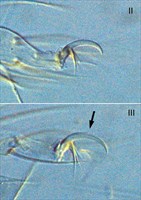
Fig. 3. Oligonychus palus adult female paratype - detail of empodia II and III (arrow indicates minute dorsal spur).
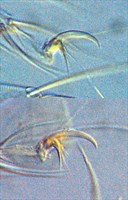
Fig. 4. Oligonychus palus adult female paratype - detail of empodium IV.
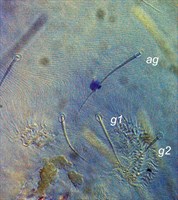
Fig. 5. Oligonychus palus adult female (paratype), detail of pregenital striae.
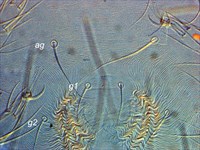
Fig. 6. Oligonychus palus adult female (non-type), detail of pregenital striae.

Fig. 7. Oligonychus palus, detail of peritreme, a. female; b. male (arrows indicating peritreme tips).

Fig. 8. Oligonychus palus, adult female (paratypes) - a-b. pattern of striae between dorsal setae e1 and f2; c. pattern of striae in pregenital area. Scale bar = 50 microns.
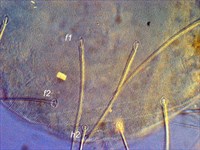
Fig. 9. Oligonychus palus adult female (paratype), detail of longitudinal striae between dorsal setae f1-f1 and f1-f2.
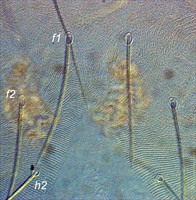
Fig. 10. Oligonychus palus adult female (non-type), detail of oblique striae between dorsal setae f1-f1, and irregular longitudinal to oblique between f1-f2.
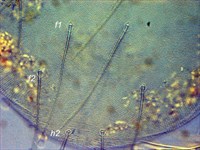
Fig. 11. Oligonychus palus adult female (paratype), detail of oblique striae between dorsal setae f1-f1, and irregular longitudinal and transverse striae between f1-f2.

Fig. 12. Oligonychus palus adult female (paratype), detail of transverse striae between dorsal setae f1-f1, and irregular oblique between f1-f2.

Fig. 13. Oligonychus palus adult male holotype - detail of empodia I, II, IV.
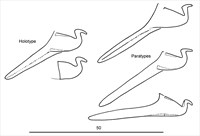
Fig. 14. Oligonychus palus adult male holotype and paratypes - detail of aedeagus (at different focal points).
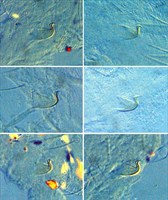
Fig. 15. Oligonychus palus adult male holotype (top left) and paratypes - detail of aedeagus.
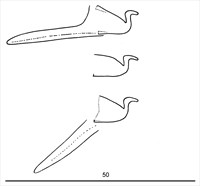
Fig. 16. Oligonychus palus adult male (non-types) - detail of aedeagus.
Material examined
types
Taxonomy
Subfamily Tetranychinae
Tribe Tetranychini
Common Name
None
Distribution
*Australia (NT)
Taxonomy Changes
None
Diagnosis
Female
- empodia I-IV = curved claw (Figs 1b-4), often with minute dorsal spur visible (Figs 2, 3)
- pregenital striae longitudinal, with some oblique striae laterally (Figs 5, 6, 8c)
- tarsus I with the sockets of four tactile setae proximal to and one solenidion proximal to, or overlapping with, the socket of the proximal duplex seta (Fig. 1a)
- tarsus II with the socket of three tactile setae and one solenidion proximal to, and one tactile seta overlapping with, the socket of the duplex seta
- peritreme ending in simple unexpanded bulb (Fig. 7)
- most dorsal striae transverse, except oblique to longitudinal, often irregular, between opisthosomal setae f1-f1 and f1-f2 (Figs 8-12)
- spinneret of palp one and half to twice as long as wide, with pointed tip
- chaetotaxy for legs I-IV:
- femora 10, 6, 4, 4
- genua 5, 5, 4, 4
- tibiae 10(1+0), 7, 6, 7
- pale green
Male
- empodium I = bifid claw, ventral and dorsal claws subequal in length; ventral claw stout, dorsal claw slender (Figs 1c, 13)
- empodia II-IV with slender dorsal claw of equal length to proximoventral hairs (Figs 1d, 13)
- peritreme ending in slightly expanded simple bulb (Fig. 7)
- spinneret of palp twice as long as wide
- tarsus I with the sockets of four tactile and two/three solenidia proximal to the socket of the proximal duplex seta (one of the three solenidia often overlapping the duplex seta, hence two/three solenidia proximal) (Fig. 1e)
- chaetotaxy for legs I-IV:
- femora 10, 6, 4, 4
- genua 5, 5, 4, 4
- tibiae 13(4+0), 7, 6, 7
- aedeagus dorsally directed, with somewhat sinuous dorsal projection; no anterior projection; dorsal projection is short straight neck that bends posteriorly to form short, weakly tapering finger-like projection; dorsal margin of shaft at 45° angle to ventral margin, abruptly bent dorsally to form an acute angle at base of dorsal projection (Figs 14-16)
- pale green with yellow tinge
Hosts
*Musa sp. (Musaceae)
Similar Taxa
Oligonychus turbelli Beard & Walter 2003
Oligonychus sapienticolus Gupta (1976)
Biology
Mites were found in small populations on the underside of the host's leaves, mainly along the main middle vein. Little webbing is produced and their feeding causes yellow-white speckling that turns more yellow and can be seen from the top of the leaf.
References
*Beard, J.J. (2008) A new species of spider mite, Oligonychus palus sp. nov. (Prostigmata: Tetranychidae), from tropical Australia. Australian Journal of Entomology 47: 102-106
Beard, J.J., Walter, D.E. and Allsopp, P.G. (2003) Spider mites of sugarcane in Australia: a review of grass-feeding Oligonychus Berlese (Acari: Prostigmata: Tetranychidae). Australian Journal of Entomology 42: 71-78
Gupta, S.K. (1976) Contribution to our knowledge of tetranychid mites (Acarina) with descriptions of three new species from India. Oriental Insects 10: 327-351
Notes
Length of dorsal setae c3: O. palus 80-86 micrometres, O. turbelli 68-71; solenidion in distal duplex complex: O. palus 75-78, O. turbelli 61-67; tarsus IV solenidion: O. palus 46-50, O. turbelli 38-40.
Copyright © 2018. All rights reserved.